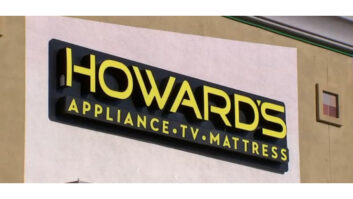TWICE virtually sat down with Stephen Baker, VP and industry advisor for technology & mobile for the NPD Group, who has been tracking and analyzing the technology industry for more than 30 years, to talk about the current and future state of the consumer technology business.

TWICE: Given the COVID era we’re all suffering through, what is the state of the consumer technology industry in terms of sales?
BAKER: The state of the consumer electronics market is obviously healthy. Technology has once again proven itself to be among the most resilient of consumer products and the essential nature of technology, and its ability to solve problems in three important segments of quarantine life – education, entertainment and work – is clearly reflected in this outstanding growth. For the first five months of 2020, Total NPD Tracked Consumer Electronics Revenue is up 9% bolstered by a 19% revenue increase in April and a 23% increase in May.
TWICE: How much has e-commerce compensated for the loss of in-store sales?
BAKER: Clearly the importance of e-commerce has never been greater and for the industry overall. The loss of store revenue was obviously more than compensated for by e-commerce volumes, hence the 9% revenue growth. Over the first four months of 2020 we saw 59% of revenue share coming from online sales, substantially more than in the past few years.
TWICE: How permanent is this surge toward e-commerce?
BAKER: While we don’t expect the [e-commerce] share to remain at that level, I think it is safe to say we have permanently crossed the 50% threshold for online. But some shares will shift back to in-store. One of the environments we will see is that people will shop online, transact online, but the logistics of where the goods change hands will happen at a store, either curbside or inside the store in a buy-online, pick-up-in-store environment. There’s a slim amount of product that has enough value to consumers that they want to go into and have somebody sell the product to them. Most of what is going to happen going forward, is that people are going to shop online and take physical possession of the goods in the store.
TWICE: Retailers seem to have figured out how to survive. But what is the state – or state-of-mind – of vendors?
BAKER: Confused, stressed, aggravated, pressured, uncertain, just like the rest of us. Sudden spikes in demand are always hard to account for and make it difficult to plan. Add the spike in demand with the supply shortages/disruption that was already occurring due to the early onset of COVID in China and the task for OEMs to build and deliver products in a timely manner was and is very challenged. Today the challenges are two-fold. First is the disruption to shipping due to the suspension of flights and the challenges/length of time water logistics represent and the increased cost of shipping due to the availability problem. The second is figuring out how much product to build and what demand will look like the rest of the year.
TWICE: So with all this uncertainty, what is your prognosis for Q4?
BAKER: No one has any real visibility into whether the sales increases we are seeing now are incremental or pull-in or somewhere in between. Our general expectations are that, optimistically, we think the market will be pretty close to our end of 2019 forecast for about 5-7% growth and, pessimistically, we would see flat. Of course, given how fast conditions on the ground are changing, this viewpoint will absolutely change again. That is what is consuming most of my time.
Stephen Baker has been tracking and analyzing the technology industry for more for 30 years and offers expert insight and commentary to clients and the media about consumer technology sales and trends across the U.S. and regionally. His perspectives cover retail and e-commerce, computer hardware and peripherals, holiday and yearly sales results, and analysis of new products and their impact on the consumer technology market.
See also: Retail Turns To Tech For New Customer Experience Options












